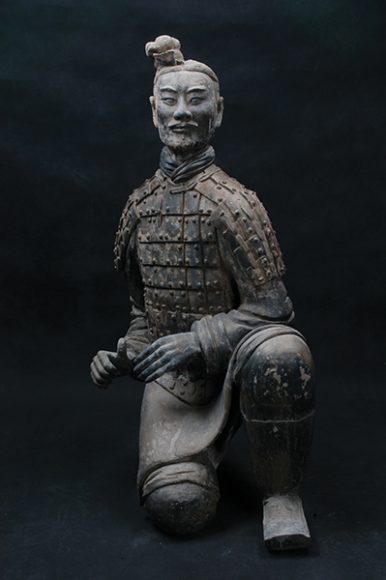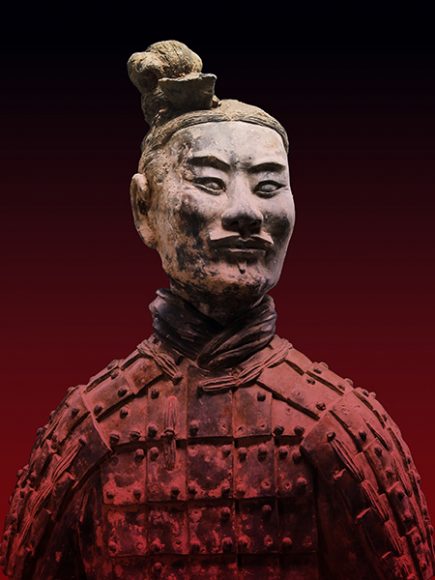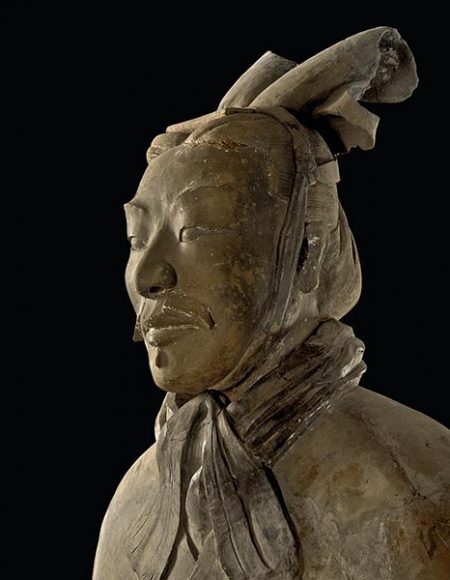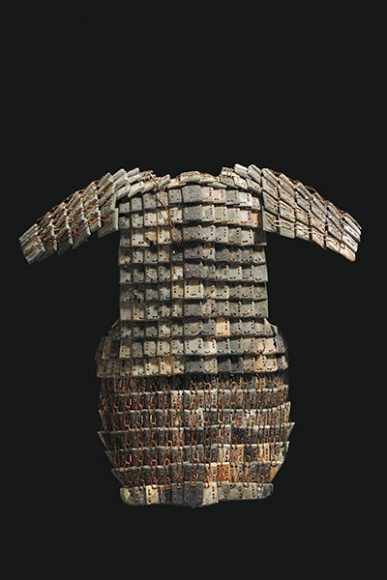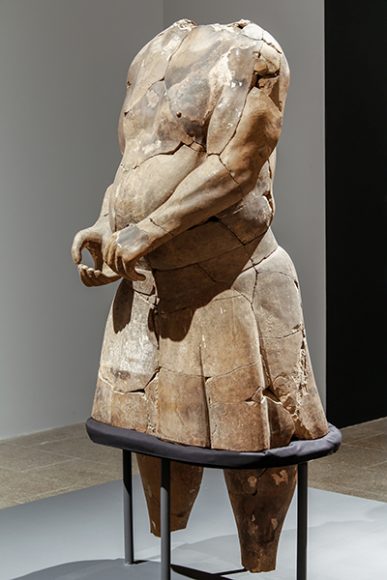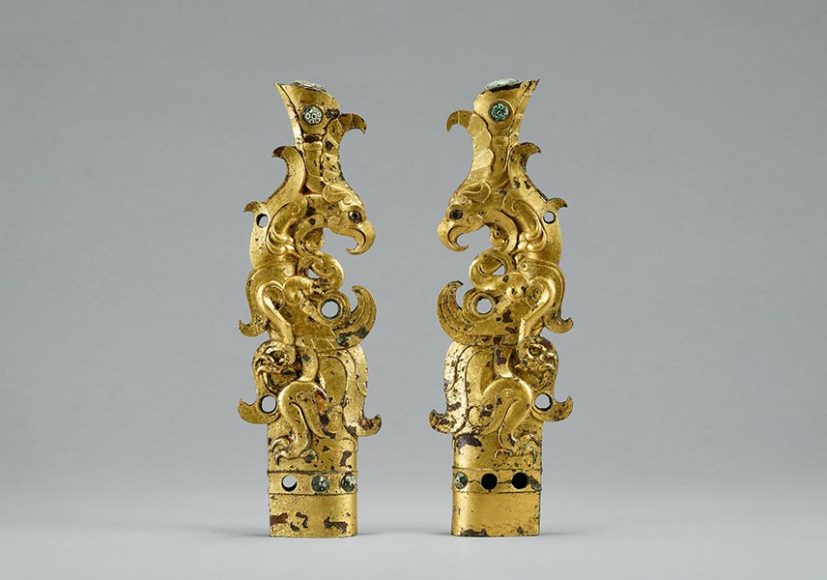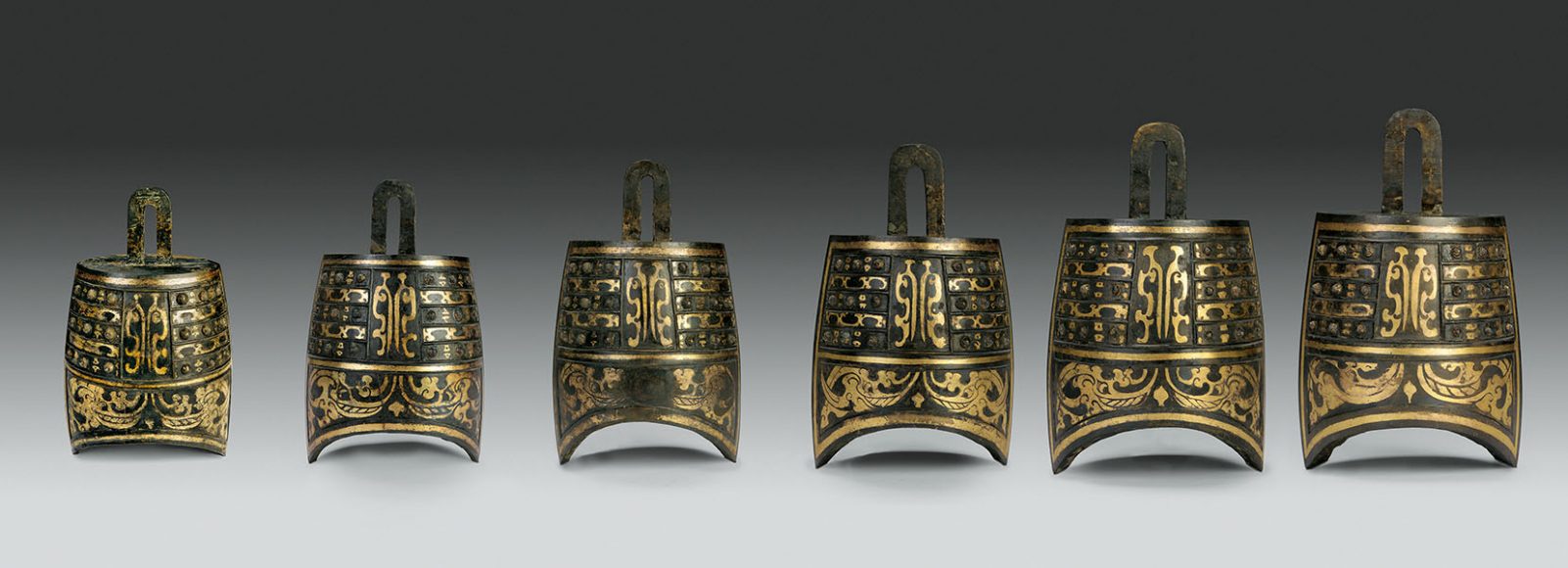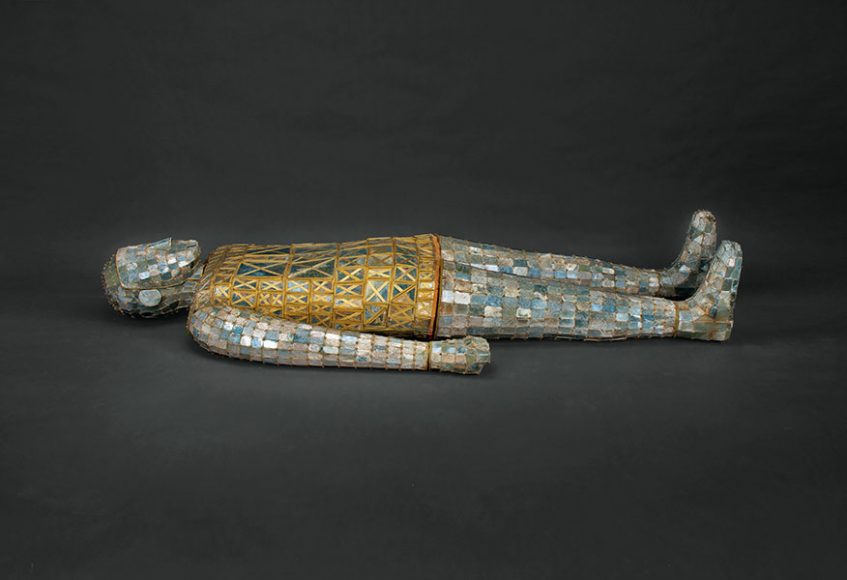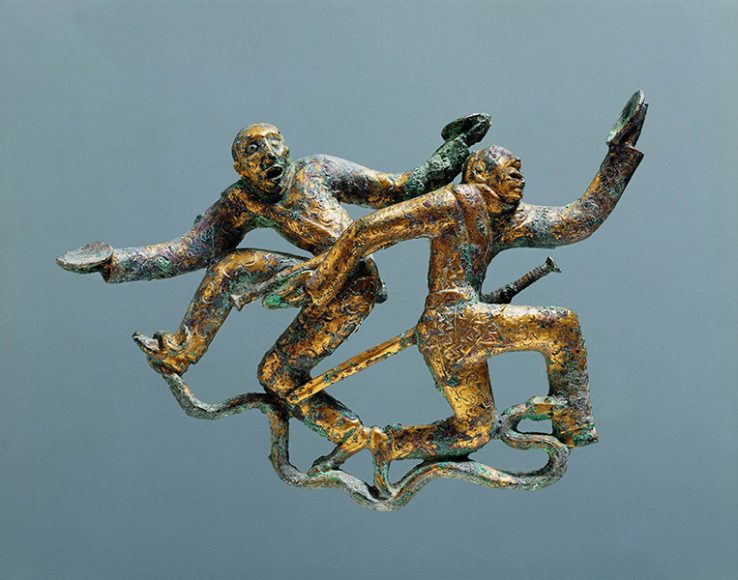“Age of Empires,” The Metropolitan Museum of Art’s stunning spring exhibition, is one of epic proportions that tells a tale of magnificent power and fragility.
The spectacular artworks and cultural artifacts focus on an often violent but major turning point in ancient China’s 5,000 year history. The central changes were established by military might during the Qin (pronounced “Chin”) dynasty and expanded by the Han, which paradoxically awakened a golden age in art and culture that became the basis for a centralized China and the 2,000 year Imperial Dynastic period.
On display are more than 160 objects loaned exclusively from 32 Chinese institutions. Most of these masterpieces are of extreme rarity and historical significance. Together they interpret the complex cultural landscape of a significant age. This epochal era of four and a half centuries not only established the structure of Chinese culture and society but shaped the characteristics of the Chinese people and affected every aspect of life in China for the succeeding millennia.
The scholarly catalog offers an in-depth history and fresh appraisal of the “classical” era of Chinese civilization, which coincided with Greco-Roman civilizations in the West that can be perceived in some of the Han sculptures.
“The Age of Empires” actually began in 221 B.C. when the armies of the king of Qin, Ying Zheng (260-210 B.C.) conquered the six rival Warring States — Chu, Han, Qi, Wei, Yan and Zhao “like silkworms devouring a mulberry bush,” writes Han historian Sima Qian (145-86 B.C.) in “Records of the Grand Historian.” Thus the state of Qin became the dominant power. The victorious king anointed himself Qin Shihuangdi, the first emperor of China.
The emperor is often remembered as a cruel despot, but he also unified China, declaring a universal written script and standardizing weights, measures, coinage and the Qin calendar. Perhaps most important, he ensured his authoritarian legalist control by standardizing the axel length of chariots so his armies could traverse the empire in the same ruts.
As soon as Qin became emperor, he enlisted 300,000 conscripts and prisoners of war to connect the walls of the conquered states into a Great Wall extending 2,150 miles to protect China from marauding nomads (Xiongnu) on the northern steppes. Qin, however, had no trouble raiding the steppes in turn: An exquisite golden crown topped by a bird with a turquoise head, on view in the show, was found in an elite Xiongnu tomb, Hanggin Banner, in Inner Mongolia.
Thousands of laborers, perished while building the wall. Their bones were crushed and mixed with mortar — earning the wall the grim sobriquet of “the longest cemetery in the world.” To protect himself from dissidents within, Emperor Qin ordered the burning of all Confucian classics and beheaded 460 scholars.
Qin joined his ancestors at age 49. During an inspection tour of his empire in 210 B.C. he was poisoned by a conniving eunuch in cahoots with the emperor’s own son. To disguise the odor of his decomposing corpse and keep the emperor’s demise a secret, a wagon of rancid fish was hitched to his golden chariot. Two stunning bronze and gold half-life-size models of the emperor’s chariots drawn by four majestic, sculpted horses are on exhibit. The second of these is enclosed by an oval roof and moveable windows.
Qin and Han societies, like their Zhou predecessor, were obsessed with life in the hereafter. Most objects were excavated from tombs. The emperor’s corpse was finally interred in Mount Li, a 15-story, cosmic designed tumulus that is yet to be excavated. His dragon-shaped sarcophagus may still float on a river of mercury in the awesome mausoleum representing a microcosm of China described by Sima Qian:
“After he won the empire, 700,000 conscripts dug through three subterranean streams and poured molten copper for the outer coffin, and the tomb was filled with models of palaces, pavilions and offices. Crossbows were fixed to shoot grave robbers. The Yellow River and the Yangtze were reproduced in quicksilver and made to flow into a miniature ocean where the dragon sarcophagus floated. The heavenly constellations above were depicted in precious stones and the regions of the earth below. Whale oil candles assured burning for the longest time.”
The First Emperor’s terra-cotta army of 7,000 soldiers arrayed in military formation was buried with him in the mausoleum complex and accidently found in 1974 by peasants digging a well. The amazing discovery captured the imagination of the world and ensured the First Emperor’s virtual reincarnation. Five pottery warriors, one kneeling archer and four poised for battle protected by limestone-scale armor, open the exhibit.
Although Qin predicted his dynasty would rule forever, it lasted but 15 years. His murder launched a brutal civil war until 206 B.C. when the Han dynasty, founded by Liu Bang (Gaozu), usurped the “Mandate of Heaven.”
The Han restored the “Yellow Emperor” Confucius and Laozi philosophies and expanded on the naturalism of Qin’s art, shifting from the human figure to sculptures of wild and domestic animals and birds, precipitating a renewed compassionate awareness of nature and the influence of a natural cosmic order. The Han founded the legendary Silk Road, which evolved into the first highway across Eurasia, connecting China to distant realms and joining the world’s two superpowers, Imperial China and the Roman Empire.
The opening of China brought fresh ideas, philosophies, religions and artwork as well as tremendous increases in overland trade and commerce throughout the ancient world. These interactions had a great influence on the Han political system, which engendered a lasting paradigm for all subsequent dynasties and fostered a cosmopolitan society whose ability to absorb foreign influence became a hallmark of China.
“Age of Empires: Chinese Art of the Qin and Han Dynasties (221 B.C.—A.D. 220),” on view through July 16, is organized by Zhixin Jason Sun, the Brooke Russell Astor curator of Chinese Art, assisted by Pengliang Lu, Henry A. Kissinger Curatorial Fellow, both in The Met’s Department of Asian Art. For more, visit metmusuem.org.

